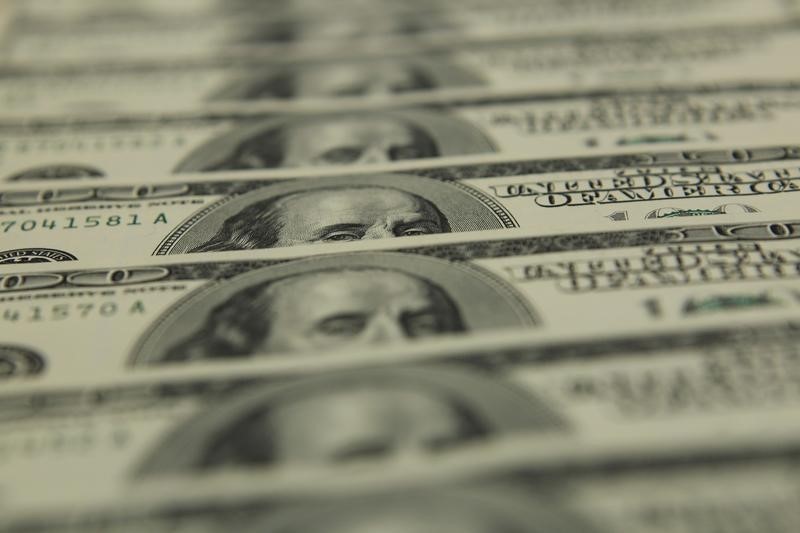Tonix Pharmaceuticals stock halted ahead of FDA approval news
Investing.com - The U.S. dollar edged marginally higher Wednesday, but still traded near multi-year lows with traders mulling dovish signals from Fed Chair Jerome Powell and the passage of President Donald Trump’s fiscal agenda through Congress.
At 04:15 ET (08:15 GMT), the Dollar Index, which tracks the greenback against a basket of six other currencies, gained 0.1% to 95.512, not far removed from its lowest level since February 2022.
Dollar remains under pressure
The Republican-controlled U.S. Senate passed Trump’s massive tax-and-spending bill overnight, with Vice President JD Vance casting the tie-breaking vote.
The legislation, which could add $3.3 trillion to the national debt, will now return to the House of Representatives for further consideration before potentially reaching the president’s desk.
Also weighing on the U.S. currency has been Trump’s continued attacks on Powell, putting Fed independence in the spotlight.
The Fed Chair stuck to his usual cautious tone in the central bank retreat in Sintra, Portugal, reiterating a strict data-dependent approach that is set to keep the dollar extremely sensitive to jobs and inflation figures.
However, “Powell refused to rule out a July rate cut, so a sharp payrolls miss tomorrow would give markets license to price in easing as soon as this month,” analysts at ING said, in a note.
Ahead of Thursday’s jobs report, traders will study the latest monthly gauge of private payrolls, due later in the session.
Economists expect the figure in the ADP National Employment Report to rise to 99,000 in June, up from 37,000 in the prior month.
Data on Tuesday showed that while job openings unexpectedly ticked up in May, hiring weakened, indicating a possible cooling in an otherwise resilient labor picture.
Euro in demand
In Europe, EUR/USD slipped 0.2% to 1.1778, just below its highest level since September 2021, with the single currency having recorded its strongest-ever first half performance, according to LSEG data.
The euro’s recent appreciation against the dollar doesn’t just reflect market conditions but also the strength of the euro zone’s economy, European Central Bank President Christine Lagarde said on Tuesday.
"It’s a reflection of the market conditions and assessment," Lagarde told the ECB’s Conference on Central Banking. "It’s also a reflection of the strength of our economy."
Last month, the ECB cut rates for the eighth time in a year but indicated it would likely pause at its next meeting.
“The ECB delivered its hawkish pivot at the June meeting and is now content to await incoming data before making further moves,” said ING.
“EUR/USD remains largely driven by the dollar, and the market’s inclination to buy dips was clear in yesterday’s brief correction following stronger US data. A jump to 1.20 on a big U.S. payrolls miss remains possible.”
GBP/USD slipped 0.3% to 1.3709, falling back from Tuesday’s high of 1.3787, a level last seen in October 2021.
Sterling has been hurt by the political difficulties the ruling Labour Party finds itself in, after the government was forced into making significant concessions to pass its welfare bill through Parliament.
“The U.K. government scrapped a benefits cut bill that was meant to save £5bn following a revolt by Labour backbenchers. Aside from the potential implications for the stability of PM Starmer’s party leadership, the probability of autumn tax hikes has probably increased further,” ING said.
Yen looks to a trade deal
In Asia, USD/JPY traded 0.3% higher to 143.83, with the focus largely on a trade deal between Tokyo and Washington, which Trump said appeared fleeting.
USD/CNY slipped marginally higher to 7.1672, with the Chinese currency slightly weaker as the dollar steadied above three-year lows.
